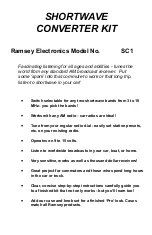
PVI 10KW / PVI 13KW / PVI 15KW Installation and Operation Manual
DOC-020028 rev 028
7
Notes regarding mounting and placement of the inverter.
Criteria for device mounting:
•
Because the power electronics is in an IP65 sealed enclosure within the NEMA 3R main
enclosure, the inverter can be mounted outdoors.
•
The very longest life for the inverter can be achieved by mounting it in a clean, dry and cool
location even given the unit’s robust construction and powerful cooling system.
•
For optimal electrical efficiency, use the shortest possible AC and DC cables and use the
maximum allowable cable size.
•
Avoid installation in close proximity to people or animals, as there is a small amount of high-
frequency switching noise.
•
Install the inverter in an accessible location following NEC (Canadian Electrical Code) codes
for enclosure and disconnect door clearances and proximity to other equipment. (See mounting
diagram, Fig. 2.2a & 2.2c)
•
Although not required, installation at eye-height allows easy reading of the indicator LEDs on
the right side of the inverter above the DC (PV) disconnect.
•
For optimal inverter life and performance, do not mount the inverter in direct sunlight,
especially in hot climates, although the inverter is designed to function at full power
continuously in up to 50
o
C ambient temperatures. In hot climates if the unit must be mounted
in direct sunlight a metal sun-shield is recommended. It is recommended that the inverter is
mounted on the north side of buildings or on the north side of a PV array (which can provide
some shade).
CAUTION:
Please follow these guidelines:
•
The inverter weight is 380 lbs. Be sure to verify load capacity of floor, roof or wall mounting
area.
•
The ambient temperature must be between –25
o
C and +50
o
C for full power, continuous
operation. (The inverter will automatically reduce power or shut down to protect itself if
ambient air temperature rises above 50
o
C.)
•
The National Electrical Code (NEC) (Canadian Electrical Code) requires that the inverter be
connected to a dedicated circuit and no other outlets or device may be connected to this circuit.
See NEC Section 690-64(b)(1). The NEC (Canadian Electrical Code) also imposes limitations
on the size of the inverter and the manner in with it is connected to the utility grid. See NEC
Section 690-64(b)(2).







































